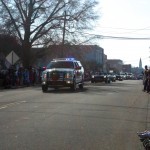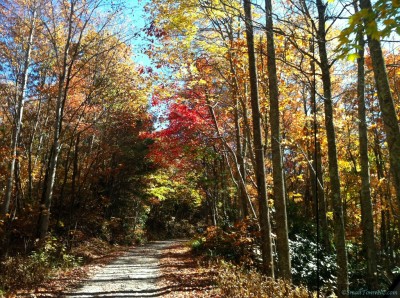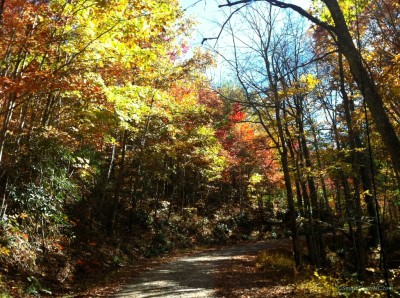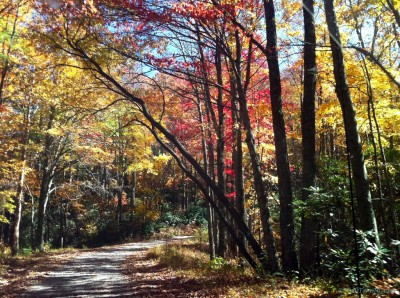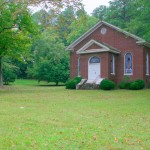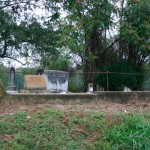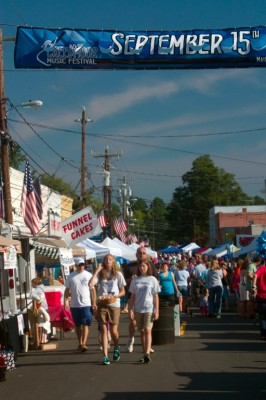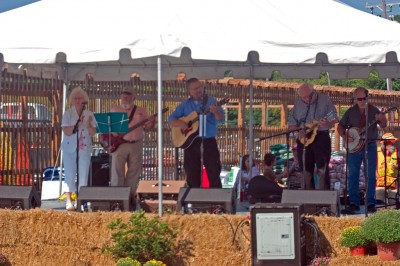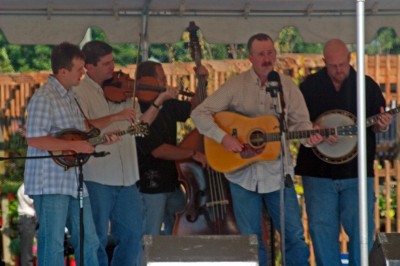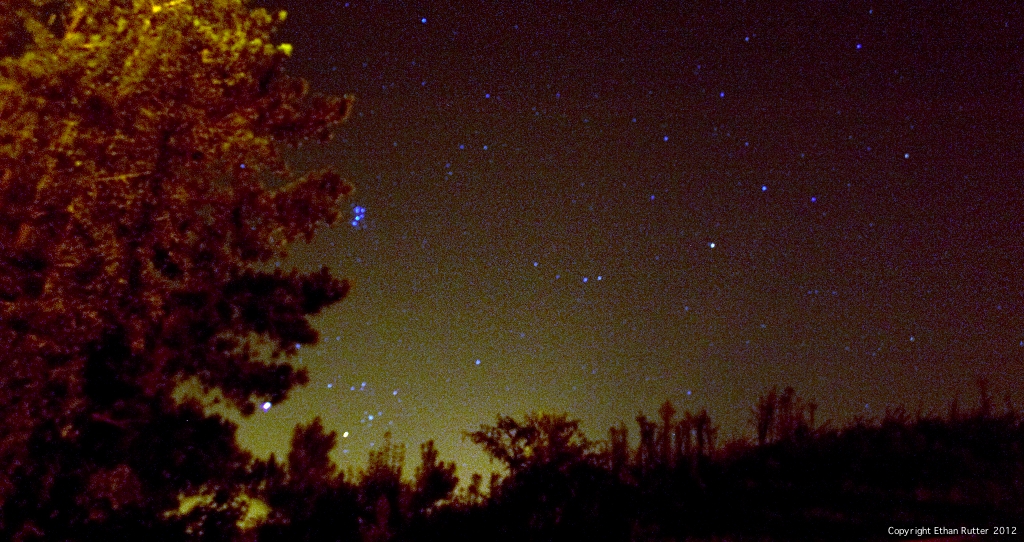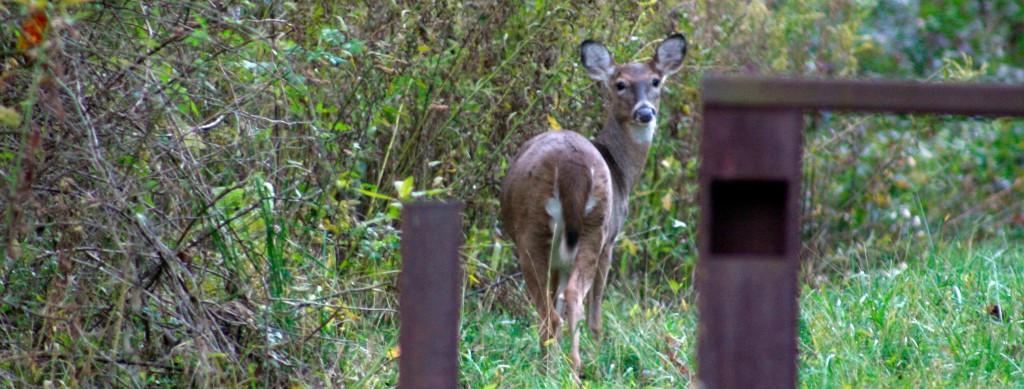Trite as the statement may be, we truly live in a mobile society. My own family is a textbook example. My parents were both born and raised in St. Louis. Dad was an Air Force officer, so we moved around quite a bit. My wife’s parents are from Savannah and the Virginia side of Washington, D.C. Her dad was an Army chaplain—not exactly a stationary occupation, either. We were married in Nashville, spent seventeen years in Phoenix, and now find ourselves in rural North Carolina.
Over the years many of our friends have had similar experiences, so we’ve come to take such great mobility for granted. Until now. Here in the Piedmont—French for foothills; in this case, of the Appalachians—family names go back decades and even centuries. Consider our current location. Granville County is in the north-northeast of North Carolina’s portion of the Piedmont. Everywhere you go you see Hobgood, Lyon, Gooch, Currin, Mangum…the names of our new friends but also of early area merchants, railroad men, preachers, and of course, tobacco farmers.
Even though we’ve never lived in North Carolina before, my wife has family ties to the state: the German side of her mother’s family hails from the tiny town of Tyro on the other side of the Piedmont. Curious to explore her roots, we loaded up the Xterra and—armed with camera, tripod, and a well-provisioned picnic basket—trucked it on down to Tyro.
There really isn’t much to Tyro: Food Lion, a video store, Lutheran and Methodist churches. Glad we packed lunch. Google maps showed a couple old cemeteries, so we just picked one. A mile or so out of town we came across the sign for Old Wesley Chapel Cemetery. No chapel in sight, but a short bump down a gravel road we spied the cemetery.
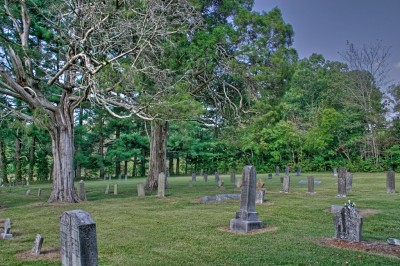
The first grave marker we came to read Bryce Swicegood, a cousin my mother-in-law knew growing up. Farther in, the graves were older, with many going back to the mid-1800s. Tiny diamond-shaped headstones reminded us how hard life can be. Placed in rows at the feet of their parents, they marked lives that lasted only weeks, days, or just hours.
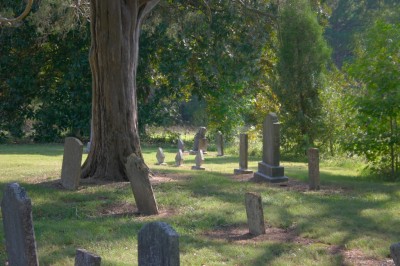
We wandered quietly through the small field reading names and dates until the stillness was broken by the insistent braying of a donkey at the far end. When I walked over to the fence, he came right up to me, lowering his ears like a dog while I scratched his coarse mane. Not much to look at, he was quite the friendly jack so we fed him a couple leftover apples from lunch hoping the farmer wouldn’t mind.
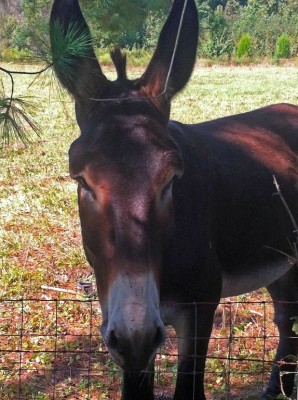
It was rather fortuitous that he’d called us over or I’d have missed that part of the cemetery. Overgrown and with headstones tumbling, I couldn’t help wondering about the denizens of this section. Were they the local black sheep or did they simply not have any descendents to keep up with the encroaching greenery?
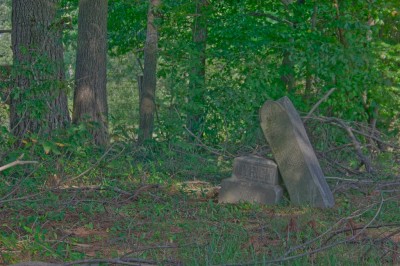
The afternoon was passing so we drove back down Swicegood Rd. into town. A half mile on the other side of the main street was a larger cemetery which my mother-in-law had told us held more family graves as well as all that’s left of the old Lutheran church—the entryway stairs.
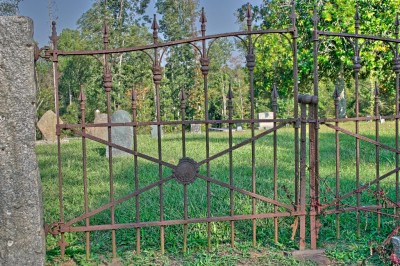
I’ve mentioned the Swicegood name a couple times. That side of the family traces back to Laurentius (Lorentz) Schweissguth, who emigrated from what is now Wiesbaden, Germany, to Pennsylvania in 1751. It doesn’t appear that he ever moved to North Carolina, as he died in York County, PA, in 1799. His son Johan Adom—Anglicized to John Adam Swicegood—was born in York County but migrated down to Tyro and is interred in Sandy Creek Cemetery. In 1790 John, in fact, donated the original tract which makes up the back corner of the current cemetery, but didn’t take up permanent residence there until 1833. The stone marking his grave lies just beyond the cross at the top of the hill. Farther down are a hundred or so graves, most dating from the late 1700s to early 1800s.
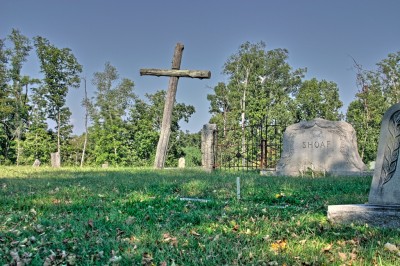
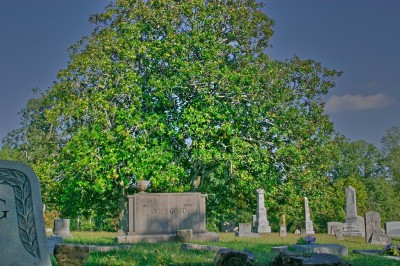
I wished we had taken a roll of paper and heavy pencils or crayons. Many of the old gravestones were illegible, but you can still trace the names and dates with your fingers—lives forgotten, their memories lost to the ravages of time. But I suppose if we had taken them along we would have spent all day making rubbings, and we still wanted to head down to Salisbury to check out the historic section of town before the light gave out.
I’m glad we did, because Salisbury is beautiful. Host to a couple small colleges, its main street is lined with old storefronts, churches, and the county courthouse—and an entire armada of gleaming new Dodge Chargers emblazoned with the Sheriff’s insignia. Message received, note taken.
We drove—slowly, mind you—up and down side streets overhung by giant hardwood trees, gawking at lovingly restored and maintained homes. Down one street we ran into the former merchant neighborhood. Old red brick warehouses painted with fading signs advertising everything from dry goods and the ubiquitous tobacco to Sailsbury’s own contribution to regional cuisine: Cheerwine. (If you haven’t tried it—or ever heard of it—go to their web site. They ship. Better than Dr. Pepper any day of the week.)
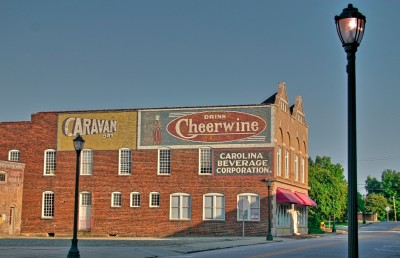
The historic Cheerwine Building—recently renovated into apartment flats and lofts—is just across the tracks from Salisbury’s old train station.
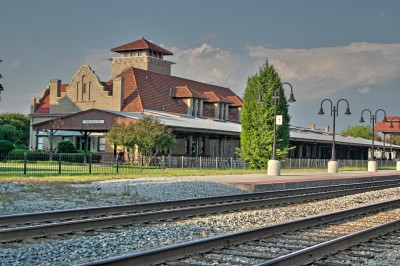
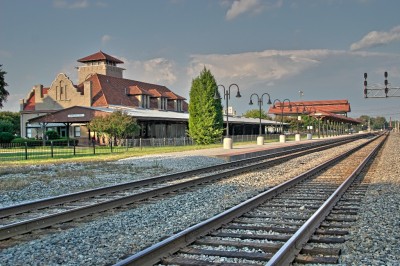
My mother-in-law used to ride the train to this station from Washington, D.C., to visit relatives who lived in the neighborhood behind the warehouses on the east side of the rail yard. They would drive from Salisbury up to see her “country cousins” in Tyro.
Hmm. I guess the mobility of our country goes back a bit: from Herr Schweissguth leaving Germany for Pennsylvania over two hundred fifty years ago, to his children spreading out over the South, to descendants who were born in the desert Southwest and are now “back home” again. We may have accelerated the pace a bit, but we certainly didn’t start the trend ourselves.
Names. Family roots. Some go pretty deep in these parts. Others, like ours, are spread wide but circle back to the trunk—to an attachment ephemeral yet somehow solid and lasting. It’s fascinating to explore and discover the interconnections, and to find my family playing a part in tying together two seemingly unrelated places right here in small town, North Carolina.

